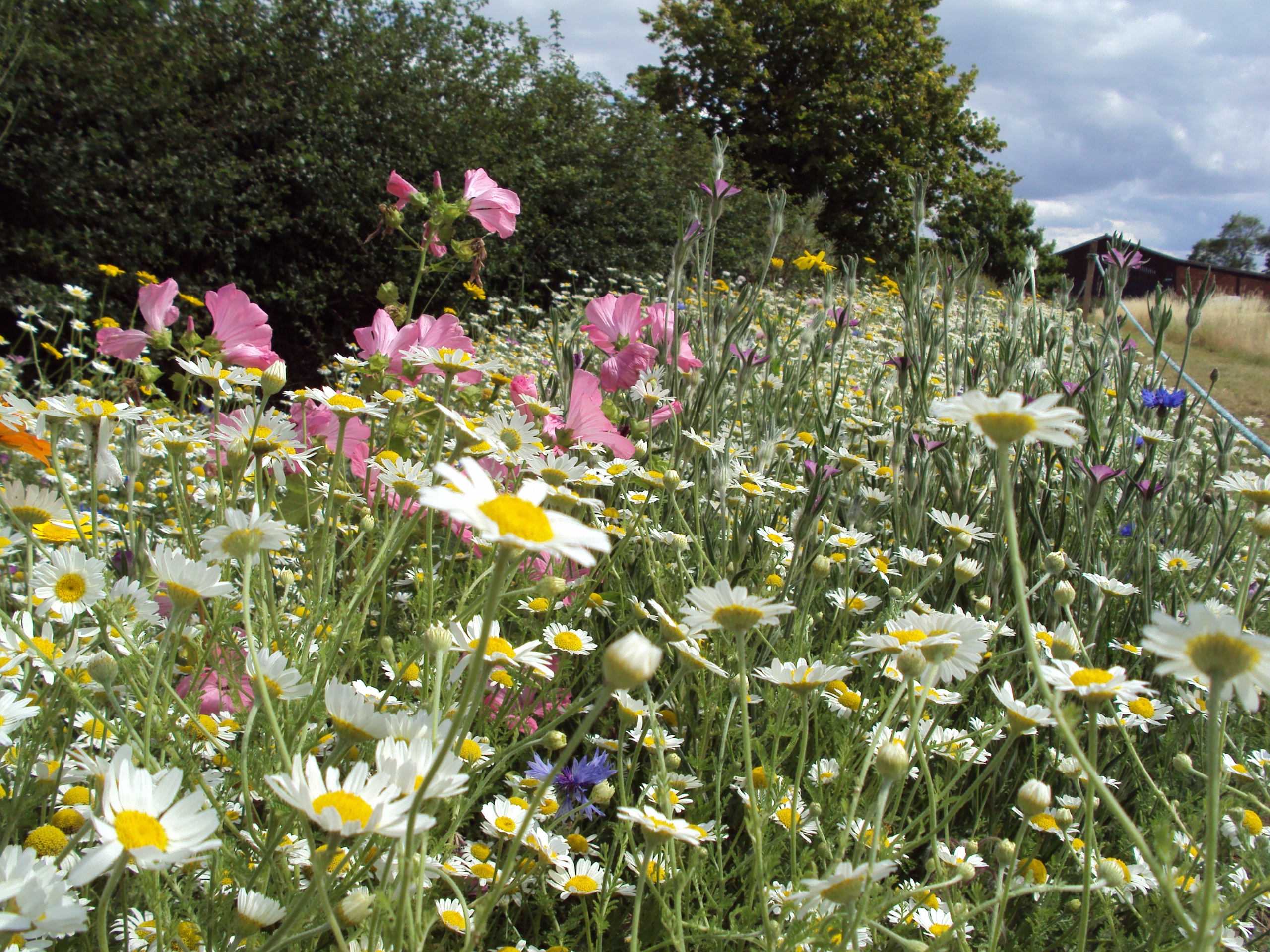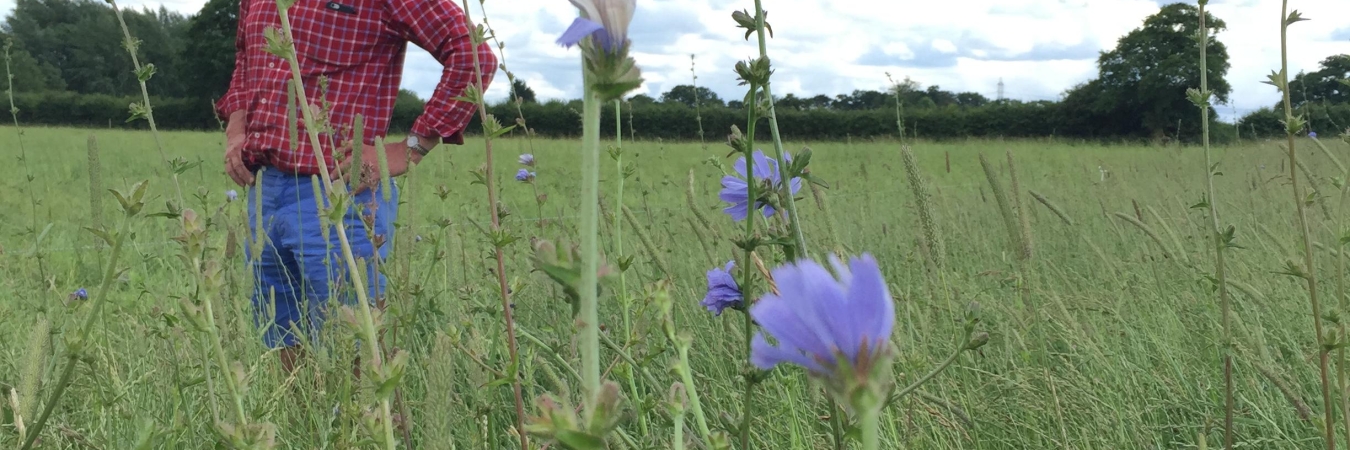No-till, ‘flower power’ & ‘the farmer’s nemesis’
June was a really busy (and hot!) month for the Agricology team packed full of some great events, one of which was the no-till conference Groundswell. To view footage from it, have a look at our video section. You can find out about Weston Park Farms, where the conference is set, in our farmer profile for John and Paul Cherry. They refer to both benefits and challenges of a no-till system, one of which was the focus of June’s content; that of managing pests and diseases. They cite increases in slug attack as being a particular challenge of their no-till system, but say that “the idea is that a more healthy balanced soil will harbour as many beneficial species as harmful ones, so as time moves on slugs are reducing.”
Another damaging crop and grass pest that can be very difficult to control is the leatherjacket (the larvae of crane-flies, or daddy long-legs). The Innovative Farmers network has been running a field lab on non-chemical ways to control them in Scotland. A useful note produced as part of the field lab focuses on the lifecycle of leatherjackets and outlines some of the management and biological control options.
In video footage taken on mid summer’s day, Jez Taylor, head gardener at Daylesford Organic Farm, talks about how he manages pests and disease in the market garden, using a mesh to cover crops and horticultural fleece to help deter smaller pests such as flea beetle. He refers to the importance of not letting crops become ‘stressed’ in order to prevent diseases from taking hold.
The importance of encouraging beneficial insects to manage pest control is the subject of a webpage of the Game & Wildlife Conservation Trust, which describes why and how to establish the perfect beetle bank to benefit a variety of farmland wildlife; from beetles to birds. It highlights that there are fewer hedgerows today than in the past and field boundaries tend to be of poor quality, which means that there is less suitable overwintering habitat available for predatory insects and spiders, and it can take these predators several weeks to reach the centre of large fields. Beetle banks can help overcome this, providing suitable habitat for predatory insects and spiders that significantly reduce crop pests.
This need to look at different ways of attracting beneficial insects to various parts of your farm is also the focus of a fascinating blog from Dr David George of the Stockbridge Technology Centre. He refers to research that found that yield increases in cabbage, peas and cereal crops could be correlated to utilising ‘multi-functional field margins’ which also have the capacity to deliver pest control.

David emphasises that “careful and considered formulation is needed to ensure that sown flower margins can deliver crop protection benefits. Pest natural enemies are often unable to utilise the same flowers as pollinators, for which many a margin seed mix is designed.” He goes on to say “Including plants that are likely to establish well, play nicely together in terms of competition, complement each other to provide an extended flowering season, and are unlikely to become a weed issue, are also important considerations to make the most of your ‘flower power’. In order to ensure that pest natural enemies can proliferate into the middle of fields rather than just concentrate in certain areas, he encourages looking at other mechanisms such as polycultures, trap crops, biopesticides, and floral islands within fields which are all very compatible with the flowering margin approach.
John and Paul Cherry refer in their farmer profile to the virtues of diverse herbal leys in helping to out-compete what was our ‘challenge of the month’ during June; black-grass – what Laura Crook from Rothamsted Research refers to in her blog as the “farmer’s nemesis.” A featured AHDB information sheet outlines important non-chemical methods of weed control (e.g. ploughing, delayed autumn drilling and spring cropping) and their effectiveness in controlling black-grass. It also provides essential information for understanding black-grass and its behaviour. One of many useful AHDB resources, more can be accessed via the link.
July’s content is focusing on pasture-based systems, and during August we will look particularly at optimising photosynthesis and crop yields in diverse cropping systems. Do you have any ideas for content you think we should be sharing with the Agricology community? Please get in touch via Facebook, Instagram, YouTube, Twitter (@agricology), use the Comments feature below, or contact us on enquiries@agricology.co.uk.
Janie Caldbeck is the Content Editor for Agricology
Header image: As featured in John and Paul Cherry farmer profile

